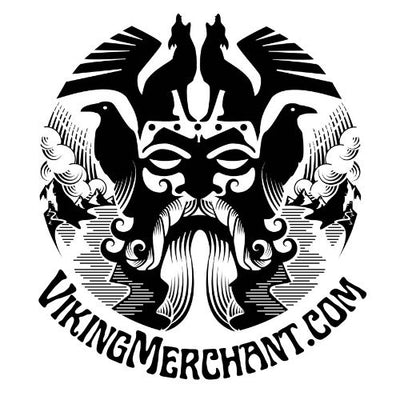Children in Viking Households
Posted by Amber Lee on
In today's world, the term 'childhood' often evokes images of school, playtime, and a gradual journey to adulthood. However, in the Viking era, the scenario was quite different. Childhood for Viking youngsters was a blend of learning essential life skills, contributing to household duties, and absorbing the cultural stories and values that would shape them into adults.

Let's examine the world of Viking children and the kinds of responsibilities they held.
From a tender age, Viking children were introduced to chores. Living in a society where survival was closely linked to one's ability to work and contribute, it was crucial that children learn the ropes early. Boys might assist their fathers in farming, fishing, or tending to animals, while girls often helped their mothers with domestic chores such as cooking, sewing, and managing the household.
While chores were essential, skill development was equally emphasized. Boys were trained in essential survival skills like hunting, boat building, and weaponry. Simultaneously, girls were taught the intricate art of weaving, embroidery, and herbal medicine. These skills were not merely for sustenance but were considered vital cultural practices that each generation needed to carry forward.
The Viking society was primarily oral, with a rich tradition of sagas, myths, and legends. Children learned about their heritage, the feats of their ancestors, and the gods they worshipped through stories narrated by the elderly or skalds (Norse poets). These tales served as both entertainment and moral lessons, embedding values and societal norms.
While responsibilities were a significant part of their lives, Viking children did have moments of leisure. They played with toys crafted from wood or bone, such as miniature boats, dolls, and figurines of animals. Games that mimicked adult activities, like mock battles or housekeeping, were also popular. These playful activities not only offered relaxation but also prepared children for their eventual adult roles.
As Viking children transitioned to adolescence, they underwent specific rites of passage. These ceremonies, often accompanied by gifts or new responsibilities, marked their gradual progression to adulthood. For instance, a boy might receive his first weapon, symbolizing his readiness to defend his family or participate in raids, while a girl might be given tools or items related to household management.
The world of Viking children was one of balance. While they shouldered responsibilities that might seem hefty by modern standards, these duties prepared them for the challenges of Viking society. Through work, play, and the rich tapestry of oral narratives, they grew into resilient adults, ready to navigate the complex world of the Norsemen.
